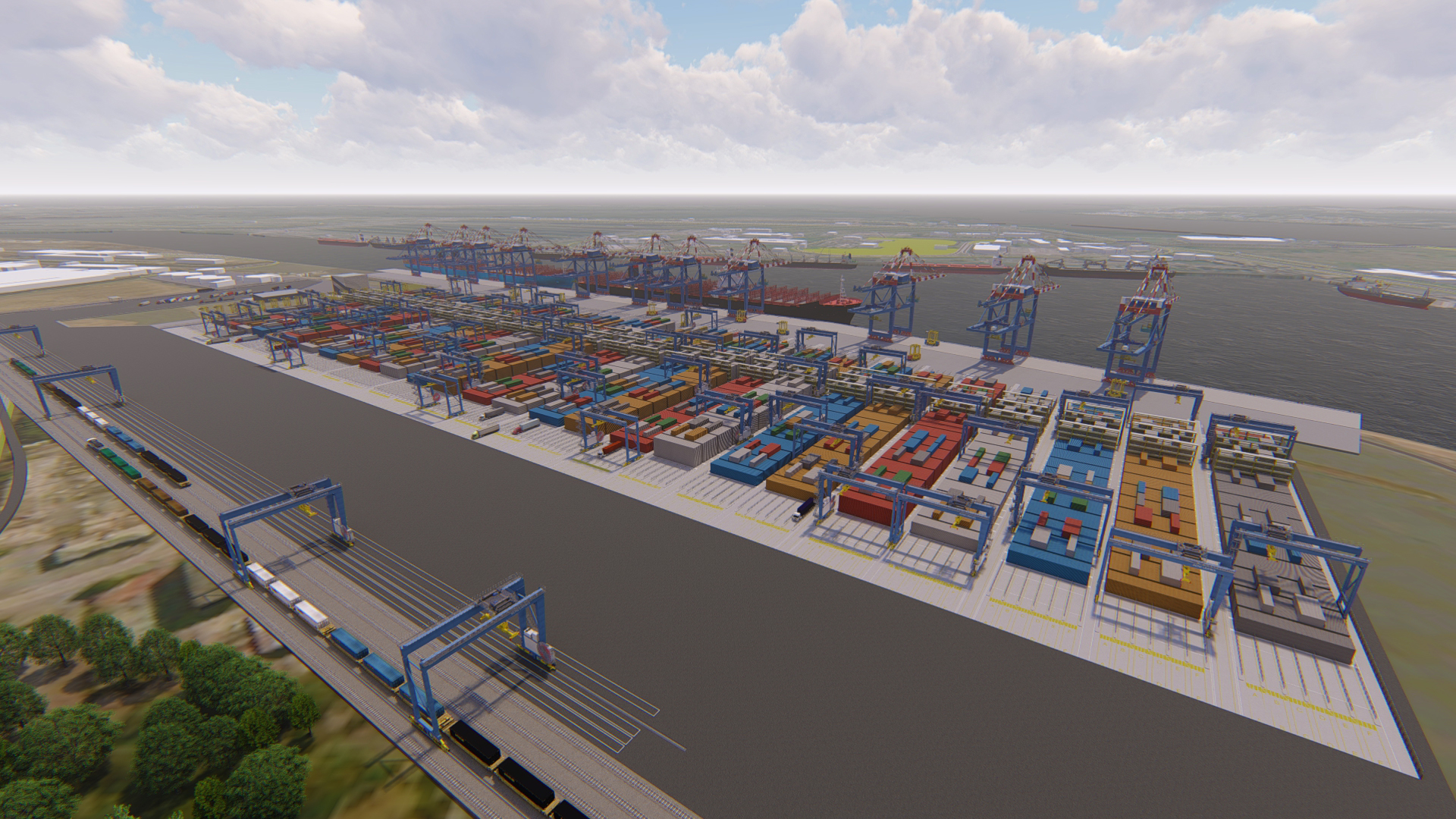
Introduction to Container Terminal Design
Begin with an overview of the significance of container terminal design in logistics. Emphasize how a well-thought-out terminal layout optimization can significantly enhance cargo handling efficiency. Highlight the importance of incorporating automated equipment integration to streamline operations.
Key Elements in Terminal Design
Discuss the critical components of terminal design, such as access road configuration, storage area planning, and quay length determination. Mention how crane rail positioning and environmental impact assessment play crucial roles in the sustainability and functionality of the terminal.
Technological Advancements in Terminal Design
Explore how digital infrastructure development and energy efficiency measures are shaping modern terminal designs. Include insights on safety protocol establishment and the utilization of traffic management systems to ensure smooth operations within the terminal.
Challenges and Future Directions
Address the challenges faced in container terminal design, including environmental concerns and security systems implementation. Look towards future directions, focusing on intermodal transport links and waterfront utilization strategies to enhance terminal efficiency and connectivity.
Suggested Comparative Table: Traditional vs. Modern Container Terminal Design
| Feature | Traditional Design | Modern Design |
|---|---|---|
| Layout Optimization | Minimal | Highly prioritized |
| Cargo Handling | Manually intensive | Automated systems |
| Energy Efficiency | Not a focus | Integral design feature |
| Environmental Impact | High | Minimized through planning |
| Safety Protocols | Basic | Advanced and comprehensive |
Video:
Introduction to Container Terminal Design
Container terminal design plays a crucial role in the global logistics landscape. A well-optimized terminal layout can significantly enhance cargo handling efficiency, ultimately leading to faster turnaround times and reduced operational costs. The integration of automated equipment, including guided vehicles, is paramount, as it streamlines operations and minimizes human error, ensuring that the terminal can meet the demands of modern shipping and logistics.
Key Elements in Terminal Design
The design of a container terminal encompasses several key components that must be meticulously planned to ensure operational efficiency.
Access Road Configuration
The configuration of access roads is fundamental for facilitating the smooth movement of trucks and other vehicles. Proper design minimizes congestion and ensures that cargo can flow freely in and out of the terminal.
Storage Area Planning
Storage area planning is equally important, as it determines how containers are organized and accessed. Strategic placement of storage areas, including stacking configurations and container types, can greatly improve loading and unloading processes, immediately enhancing efficiency for container handling.
Quay Length Determination
The determination of quay length is essential for accommodating different types of vessels. Longer quays allow for more vessels to dock simultaneously, increasing total throughput.
Crane Rail Positioning
Crane rail positioning is critical for effective cargo handling. The layout must ensure that yard cranes can efficiently service all storage areas, facilitating quick loading and unloading operations. This involves working with various interfaces to manage the number of cranes effectively.
Environmental Impact Assessment
Finally, conducting an environmental impact assessment is vital for understanding how terminal operations affect surrounding ecosystems. This process helps design terminals that not only operate efficiently but also comply with environmental regulations and community expectations. Such studies help achieve the goals of sustainable development while allowing terminals to adapt to changing markets.
In summary, terminal design requires a careful balance of various elements to achieve its purpose. It is essential to remove any bottlenecks in the process and to keep operations flowing smoothly around the facility while ensuring that all terminal components work in harmony.
Technological Advancements in Terminal Design
Technological advancements are reshaping the container terminal design in numerous ways. The development of digital infrastructure has allowed for enhanced data analysis and operational oversight. Modern terminals utilize sophisticated software to manage logistics more effectively, providing real-time information on container locations and status.
Energy Efficiency Measures
In addition, energy efficiency measures are becoming increasingly important. The use of renewable energy sources, such as solar panels and wind turbines, can reduce the carbon footprint of terminal operations.
Safety Protocol Establishment
Establishing safety protocols is another critical aspect of modern terminal design. Advanced safety systems, including automated monitoring and alerting mechanisms, help prevent accidents and ensure the well-being of personnel.
Traffic Management Systems
Furthermore, the utilization of traffic management systems ensures smooth operations within the terminal. These systems can manage the flow of vehicles, optimizing loading times and reducing bottlenecks.
Challenges and Future Directions
Despite the advancements in container terminal design, several challenges remain. Environmental concerns continue to be a significant issue, as terminals must balance operational needs with ecological preservation. Implementing security systems is also crucial, particularly as the volume of global trade increases.
Intermodal Transport Links
Looking ahead, the future of container terminals will likely focus on enhancing intermodal transport links. The ability to seamlessly transfer cargo between different modes of transportation—such as trucks, trains, and ships—will be vital for improving overall efficiency.
Waterfront Utilization Strategies
Additionally, waterfront utilization strategies will play a key role in maximizing the size of terminal space and functionality. By optimizing the use of waterfront areas, the terminals can improve access and enhance the movement of goods.
For further information and related consultations, you may see the best publications from industry authors that provide insight into the latest requirements and strategies for operation of container terminals over the world.
Conclusion
In conclusion, the design of container terminals is a multifaceted process that requires careful consideration of various factors, including access roads, storage planning, and technological advancements. By adopting a comprehensive approach that incorporates these details, terminals can significantly improve their performance and efficiency under specific conditions, meeting the evolving needs of global trade. For example, the lifting capacity of cranes should be optimized to facilitate efficient horizontal movement of containers throughout the network. As the industry continues to grow, staying informed about the latest research and trends will be crucial for professionals involved in container terminal design, especially regarding carried loads at each port.
